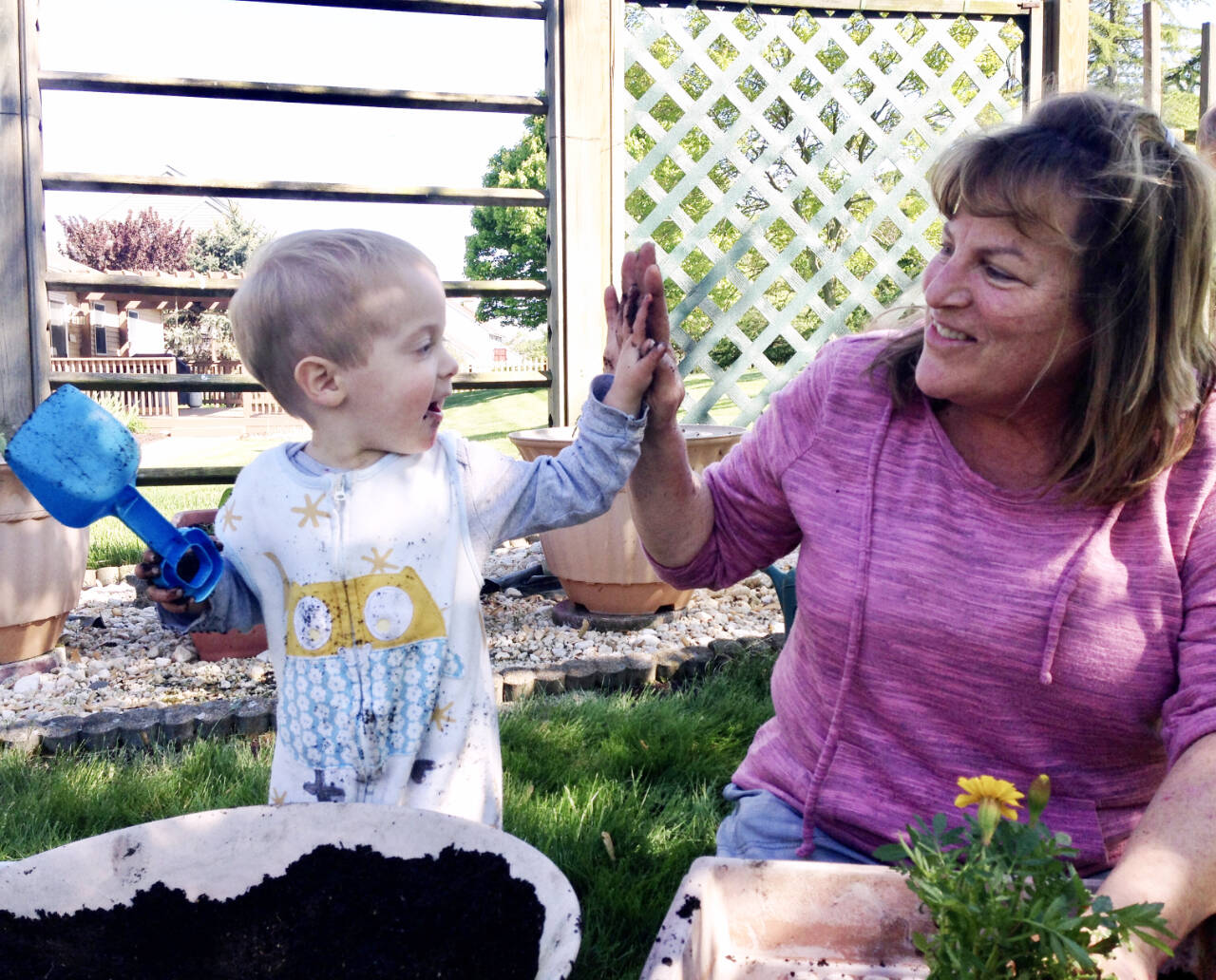Most children love to explore the outdoors, so why not help them tend a small garden?
There is something magical about planting a seed and watching it grow. Children should start with a gardening project they can take care of and enjoy. Younger children need a small, simple garden with lots of enthusiastic supervision.
A child’s project could be a small raised bed, a corner of the yard, or just a large container. Pick a sunny spot with well-drained soil and easy access to water. Help prepare the spot by pulling the weeds and mixing in compost (found at garden centers) to help enrich the soil. If you have heavy clay soil, a raised bed or a container garden may be a better solution.
A container garden can be a simple project. It doesn’t need to be fancy, but it does have to be clean: it should not have held any product that was toxic. The pot, box, or grow bag needs to be large and deep enough to hold enough soil.
For most plants, 8-10 inches is deep enough. If you plan to grow tomatoes, the deeper, the better: 16 or more inches.
All containers need to have good drain holes in the bottom. For the best results, fill the container with good commercial potting soil.
Decide how many containers are needed, and which seeds to plant. Children enjoy both growing flowers and vegetables, mix it up. Edible snap peas (Pisum sativum) can be planted early in spring, and the seeds are large enough for easy spacing. Bush peas do not require a trellis, but if there’s space, it’s fun to watch the vines grow up the trellis arms.
Snap peas are good to grow, as they are so tasty when eaten raw.
Sweet Pea, (Lathyrus odoratus) is a lovely, often fragrant, flower. It is not to be confused with snap peas, as it is not an edible vegetable crop, but a annual flower easy to grow in the Pacific Northwest. They too can be planted in early spring and now is the time to get started.
There are so many to choose from in nurseries and garden centers. Choose between heirloom varieties, brightly colored varieties, and heavily scented varieties.
A hint for new gardeners: make sure to soak pea seeds for a few hours or overnight to ensure that they rehydrate before planting. Peas can be sowed directly into the garden.
Stagger the plantings (plant some every few weeks) in March for a prolonged harvest or bloom.
Next, try a salad garden of quick growing radishes, spinach, and leaf lettuce. On a warm weekend in May, plant some radishes, spinach, and lettuce seeds. The seed packets will tell you the correct planting depth and spacing. When the plants are a couple of inches tall, thin them and pull any weeds. Radishes grow quickly and are ready to harvest in two to three weeks, while spinach and other greens take a little longer.
In the Pacific Northwest, some vegetable crops need more heat from the sun before they can be planted outside. Seeds can be started early indoors following the directions on the seed packet. New gardeners or children may want to buy vegetable or flower starts available at the local nursery or garden center.
In late May or early June, once the soil temperature is above 50 degrees and the nights are a little warmer, you can transplant the seedlings into the garden.
Green beans can be grown on long stakes tied at the top to look like a tepee. Try the Native American idea of the “Three Sisters” by planting corn first, then pole beans beside the corn to grow up the stalks, and the third sister — squash or pumpkins. These all can be planted by seed directly into warm soil.
Also in June, add another few containers of plant starts such as broccoli, tomatoes, cucumbers, or squash. If you have a lot of room, pumpkins are fun to grow; you just need room for the vines to spread out.
One caution, teach your child to never sample anything from the garden until checking with you and thoroughly washing; while potatoes and tomatoes are edible, the stem, flowers and leaves of these plants are not.
Watching a garden grow through the eyes of a child is exciting and wonderful.
For more information on vegetable gardening in the Pacific Northwest, check out gardening.wsu.edu/vegetable-gardens.
Susan Kalmar is a certified WSU Master Gardener.


